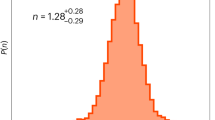Abstract
The large observed redshift of quasars has suggested large cosmological distances and a corresponding enormous energy output to explain the brightness or luminosity as seen at earth. Alternative or complementary sources of redshift have not been identified by the astronomical community. This study examines one possible source of additional redshift: an intrinsic component based on the plasma characteristics of high temperature and high electron density which are believed to be present.









Similar content being viewed by others
Notes
Here, \(\lambda_{0}\) is taken as the Mg II line at 2.798E–7 m (the same line example used in Hansen 2014).
Note: This data base or catalog is a limited sample of approximately 186 objects listed in right ascension, epoch 2000. Figure 5 has been limited by inspection to 150 of those objects that appear proximally associated. It should be emphasized that this data base does not represent the full range and distribution of QSO surveys.
References
Arp, H.C.: Catalogue of Discordant Redshift Associations. C. Roy Keys Inc, Montreal (2003)
Bocko, M.F., Douglass, D.H., Knox, R.S.: Phys. Rev. Lett. 58(25), 2649 (1987)
Elvis, M.: Astrophys. J. 545, 63–76 (2000)
Gori, F., Guattari, C., Palma, C.: Opt. Commun. 67(1), 1 (1988)
Hansen, P.M.: Apeiron 13(1), 17 (2006)
Hansen, P.M.: Astrophys. Space Sci. 352(1), 235–244 (2014)
Peterson, B.M.: An Introduction to Active Galactic Nuclei. Cambridge University Press, Cambridge (1997)
Ruff, A.J., Floyd, D.J.E., Webster, R.L., et al.: Astrophys. J. 754, 18 (2012)
Wolf, E., Foley, J.T., Gori, F.: J. Opt. Soc. Am. A 6, 8 (1989)
Wolf, E.: Phys. Rev. Lett. 63(20) (1989)




